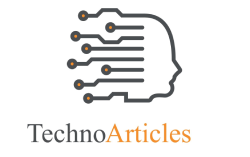Cybersecurity Threats: Where do they come from and what problems do they bring?

Cybersecurity is of most extreme significance. Any business, any association can be focused on.
The worldwide expense of cybercrime is relied upon to arrive at the US $2 trillion by 2019, and IBM CEO Ginni Rometty accepts it is the greatest danger confronting organizations all over the planet today. But, in spite of a few worldwide mindfulness crusades, countless associations are as yet not doing whatever it may take to react to this developing danger.
Where Do Cybersecurity Threats Come From?
It is typically the outside and enormous assaults that make the news. However, a ton of regular dangers come from your actual business. It very well may be spilling from your workers who, purposefully or accidentally, uncover passwords or touchy data, or an activity started by malevolent inside entertainers: representatives or partners who try to involve the data available to them to take advantage of or harm the organization’s organizations.
Outer assailants are, obviously, a developing danger: they are continually searching for security openings to get to your frameworks or to break into your internet based presence from an external perspective. Any wise and strong methodology should perceive and react to inside and outer dangers.
Any business is in danger. Nowadays, the different associations between organizations address numerous roads for programmers, who frequently assault independent companies to get close enough to their bigger accomplices, clients or providers. Enormous organizations in this way regularly ask their providers and accomplices, no matter what their size, to set up network protection measures.
Various Types Of Cybersecurity Threats
The idea of these dangers is continually evolving. Here are the most widely recognized:
Conveyed Denial of Service (DDoS) assaults: An organization of PCs floods your site or programming with superfluous data, which causes an accident delivering the framework inoperable. These can be stayed away from with hostile to infection programming, channels or firewalls.
Bots and viruses: Malware that runs naturally (bots), or that is introduced by a representative who thinks they are managing a sound record (Trojan pony), to control PC frameworks or take information. State-of-the-art programming and SSL authentications, solid infection assurance, and worker mindfulness can assist you with keeping away from these sorts of dangers.
Robbery: When outside entertainers exploit security openings to control your IT frameworks and take data. Normal refreshing of passwords and security frameworks is crucial to upsetting this kind of intrigue.
Phishing or theft: Attempting to acquire delicate data by falsely acting like a reliable element. Phishing is finished by email, while capturing utilizes imaginary locales or servers. Representative mindfulness is fundamental so as not to fall into this snare.
Challenges We Face From Cybersecurity
Information penetrates alone outcome in the misfortune or burglary of over 4.4 million squares of information each day around the world.
Take, for instance, the information break in 2015 at UK broadcast communications administrator TalkTalk. Pages containing data sets that were not generally upheld by their maker became available to programmers, who had the option to take the individual information of 156,959 clients. The outcome: a great deal of negative exposure, genuine harm to the organization’s standing, and a record fine of 400,000 pounds forced by the British specialists. With huge changes to SSL conventions (which scramble many website pages) made arrangements for 2017, the dangers influence considerably more organizations.
One of the greatest DDoS assaults in history came in 2016 when US network supplier Dyn was designated. The aggressors enjoyed taken benefit of the Internet of Things (gadgets associated with the Internet, like cameras and fridges) to do this assault, which delivered a few enormous sites defective. This kind of hazard increments as the Internet of Things develops.
Digital threats can likewise straightforwardly influence an organization’s accounts and items. At the point when Sony Pictures was assaulted by robbery in 2014, the holes might have sabotaged the worth of their items and wound up costing them around $ 300 million. In 2016,
the Bangladesh Central Bank lost $ 80 million when programmers assumed responsibility for their frameworks, took passwords, and moved assets to false unfamiliar records.
Additionally Read: Reduce Risks And Optimize Costs With The Transformation To Azure
How Should My Business Respond?
For your network protection measures to be compelling, they don’t should be convoluted or costly. Simply approach the issue as though it were the actual assurance of your home or work environment: cautiousness and security are vital, and ensure everybody in your group knows what it is. do’s and don’ts.
Watch out: An enemy of infection device with many elements (like AVG Business Security with AVAST versatile insurance) ought to be introduced on all gadgets possessed by the organization and your representatives and oversaw halfway. This will safeguard you constantly against outside dangers, for example, ransomware, phishing or seizing endeavors, and bot or infection assaults.
Secure everything: According to security specialists at Trustify, 88% of significant security breaks in 2015 and 2016 happened due to helpless encryption. It resembles leaving your entryway unlatched, or like leaving private records open around your work area. Encryption arrangements, for example, Entrust SSL encryption safeguard your private data and discourage programmers.
Train your staff: Use control records and coordinate network protection preparing to instruct your group, and execute more top to bottom arrangements by employing data frameworks and information security supervisor on demand. This will bring your business into consistence with new guidelines like the European Personnel Data Regulation (GDPR) and the Payment Card Industry Security Standard (PCI DSS).







